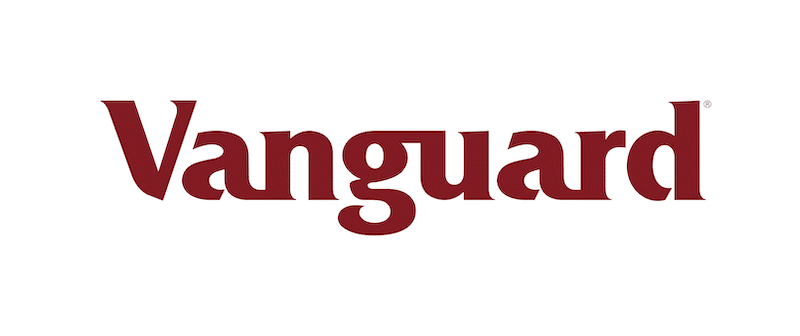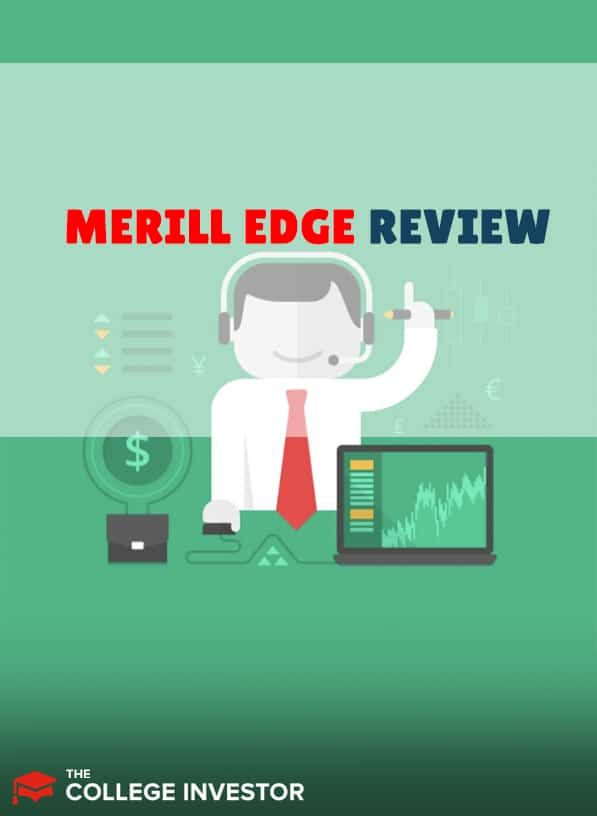
These days, there are plenty of online brokerages you can use to start investing. But one of the more recognizable ones is Merrill Edge, an investing and wealth management service offered by Bank of America.
With commission-free trades, built-in research tools, and a variety of account types, Merrill Edge is a comprehensive broker. Plus, Bank of America customers also get extra perks for investing through Merrill Edge.
But like any online stock broker, it’s important to know the fees and features so you can decide if Merrill Edge is right for you.
Merrill Edge Details | |
|---|---|
Product Name | Merrill Edge |
Product Type | Investing & Wealth Management |
Min Deposit | $0 |
Fees | Self-Directed Trading: Commission-Free Guided Investing: 0.45% to 0.85% |
Promotions | None |
What Is Merrill Edge?
Merrill Edge is an investing and wealth management service that’s under Bank of America’s retail banking arm. The service began in 2010, connecting Bank of America’s existing online investing options with Merrill Lynch, a wealth management and research service.
You don’t need to be a Bank of America customer to invest through Merrill Edge. And, unlike many online-only brokers, Merrill Edge has advisors at over 2,000 Bank of America financial centers so you can seek advice in person as a customer.
What Does It Offer?
Merrill Edge is the combination of Bank of America’s investing service and Merrill Lynch, a wealth management and research company. This makes for a robust online brokerage with numerous features to help you begin investing or grow your existing portfolio.
Commission-Free Trades

Like many of the top discount brokerages, Merrill Edge offers commission-free trading on stocks and exchange-traded funds (ETFs). There aren’t trade minimums and Merrill Edge has a $0 minimum deposit requirement.
Merrill Edge also lets you trade other types of securities, including:
- CDs
- Bonds
- Margin trading
- Mutual funds
- Options
Fees vary for these trade types. For example, option trades cost $0.65 per contract. Mutual funds that aren’t part of a no transaction fee (NTF) fund cost $19.95 per transaction, and certain bonds cost $1 per bond with a $10 minimum.
Overall, commission-free stock and ETF trading is what you want most from your online broker. Just know that Merrill Edge doesn’t support cryptocurrency investing, futures, or forex. You can’t buy fractional shares or penny stocks either.
Numerous Account Types
Merrill Edge supports a variety of investment accounts, with popular accounts including:
- Individual brokerage accounts
- Joint brokerage accounts
- IRA accounts like Roth, Traditional, Rollover, and SEP IRAs
- Custodial accounts
- 529 plans
- Health savings accounts (HSA)
This variety means you can use Merrill Edge to invest for retirement, future college education, or even with a tax-advantaged account like a HSA.
Merrill Edge also offers small business investing accounts, including a small business 401(k), retirement cash management account, and a business investor account.
Comprehensive Research Tools

One of Merrill Edge’s strengths is the research tools it provides customers. For starters, Merrill Edge has several prebuilt stock screeners to help you find the right investments. For example, you can try screeners like highly-rated dividend stocks, large cap stocks with low P/E ratios, and EPS and revenue growth stocks.
The actual stock screening tool has over 200 filters, including categories like analyst opinions, earnings and growth, valuation, financial strength, and technicals. Screeners are also available for mutual funds, ETFs, options, and fixed income investments.
Furthermore, customers get access to investing insights from BofA Global Research, Bank of America’s global research team. Some of the reports investors gain access to include:
- The RIC Report: A monthly report from the Research Investment Committee (RIC) where analysts share investing ideas and recommend certain asset allocations.
- Global Fund Manager Survey: A monthly survey that includes insights from approximately 200 mutual and hedge fund managers.
- U.S. Economic Weekly: A weekly breakdown of U.S. economic topics.
Merrill Edge has even more research offerings you can take advantage of. For starters, its Idea Builder tool highlights different investing ideas, like energy or Warren Buffett value stocks, so you can find ideas that match your investing style.
Merrill Edge also has a wealth of third-party research. This includes research from Morningstar, CFRA, and Lipper. This level of additional research plus regular market news and updates means you can dive into your sectors of choice and stay informed.
Merrill Edge MarketPro
Everyday investors can get away with Merrill Edge’s mobile app or the platform’s normal portfolio dashboard. And more active traders can try MarketPro, a more robust trading dashboard that’s free for Merrill Edge customers.
Some perks of MarketPro include:
- Real-time market data and insights
- Creating your own trading layouts and save up to 25 of them
- Advanced charting tools with over 100 technical indicators and 25 drawing tools
- More in-depth options analysis
- Nasdaq level II quotes
There’s also built-in automatic technical analysis through Recognia, which is the same partner companies like Fidelity and Charles Schwab integrate with.
Overall, MarketPro is useful for more active investors who need additional charting tools and research capabilities. But it’s not ideal for day trading since it lacks one-click buy and sell.
ESG Investing
Another Merrill Edge feature that’s attractive for some customers is its ESG investing offerings. ESG stands for environment, social and corporate governance. It’s a method of socially responsible investing that values companies and sectors that benefit the environment and various social welfare initiatives.
Merrill Edge claims its an industry leader in terms of ESG investing, and it certainly has a lot of features to back up this claim.
The Ideas Builder tool highlights numerous ESG-friendly investments you can add to your portfolio. You also get ESG ratings for individual securities with the Stock Story tool. And, with Portfolio Story, you can view your entire ESG score at a glance.
Guided Investing
Merrill Edge offers Self-Directed investing which is ideal if you want a low-fee way to invest on your own terms. There’s also Guided Investing which caters to investors who need a helping hand with building their portfolios.
Guided Investing provides advice and portfolio recommendations from Merrill professionals. Merrill also handles portfolio rebalancing and essentially takes the work off of your plate. All you have to do is tell Merrill about your goals and risk tolerance so its professionals can build a portfolio that’s right for you.
There are two branches of Guided Investing, each with different funding requirements and fees.
Merrill Edge Guided Investing Fees | ||
|---|---|---|
Online | Online With Advisor | |
Minimum Investment | $1,000 | $20,000 |
Annual Fee | 0.45% | 0.85% |
Note that these AUM fees are a bit steep. Leading robo-advisors often start at around 0.25% annually and you can get a managed portfolio from Ally Invest with no fees at all. Merrill Edge's online-only pricing is actually higher than the Premium tier at Betterment (0.40% advisory fee) which includes unlimited access to CFPs.
However, as we'll discuss later, Bank of America customers can reduce their Guided Investing fees by 0.05% to 0.15%. If you can get the maximum discount, the cost of Merrill Edge's online-only Guided Investing drops to 0.30%, which is a bit more competitive.
Mobile Trading
With the Merrill Edge app for Android and iOS, you can manage your investment accounts and Bank of America accounts while on the go.
The app also offers several feature aside from letting you check your portfolio, including:
- A customizable dashboard
- Mobile trading
- Stock and watchlist alerts
- The latest quotes, news, and analyst ratings
In short, if you’re a Merrill Edge customer, you should probably download its app in case you ever need to place a trade or move money around while away from your computer.
Preferred Rewards
Merrill Edge Preferred Rewards is a rewards program for Bank of America customers. There are two requirements to join this zero-fee rewards program:
- Have an active Bank of America checking account
- Have a three month average daily balance of $20,000 or more in qualifying Bank of America and/or Merrill investment accounts.
As a Preferred Rewards member, you get a variety of perks that impact your Merrill Edge investing and Bank of America accounts. Perks depends on your average monthly balance, and there are three reward tiers:
Merrill Edge Preferred Rewards | |||
|---|---|---|---|
Gold | Platinum | Platinum Honors | |
Balance Requirements | $20,000 to $50,000 | $50,000 to $100,000 | $100,000+ |
Merrill Guided Investing Discount | 0.05% | 0.10% | 0.15% |
BoA Advantage Savings Interest Boost | 5%% | 10% | 20% |
Credit Card Rewards Bonus | 25% | 50% | 75% |
Non-BoA U.S. ATM Transactions | None | 12 Per Year | Unlimited |
Guided Investing discounts and boosts for your high-interest savings accounts and eligible rewards credit cards are the main perks. Members can also get discounts on auto insurance, lower banking fees, and better foreign exchange rates.
Are There Any Fees?
As mentioned, Merrill Edge offers commission-free trading on stocks and ETFs. But option trades cost $0.65 per contract, and no transaction fee mutual funds cost $19.95 per transaction. And you'll pay an AUM fee of 0.45% to 0.85% depending on your account size.
There aren’t any account maintenance fees or minimum deposit requirements. However, Merrill Edge charges $49.95 in closeout fees for retirement accounts and $49.95 for account transfer fees for general investing accounts. Overall, Merrill Edge is best for stock and ETF investing due to its lack of fees.
How Does Merill Edge Compare?
Merrill Edge is just one of many online brokerages you can use to begin building wealth. If you’re a Bank of America customer, going with Merrill Edge is a natural fit since it syncs with your BoA accounts. This is especially true if you can qualify for Preferred Rewards.
However, Merrill Edge lacks cryptocurrency investing and fractional shares. Merrill Edge also doesn’t have the same caliber of its own funds like a company like Vanguard does.
Header |  | ||
|---|---|---|---|
Rating | |||
Commissions | $0 | $0 | $0 |
Min Investment | $0 | $0 | $0 |
Fractional Shares | |||
Crypto Trading | |||
Cell |
If crypto and fractional shares aren’t important, Merrill Edge holds its own against the top brokerages. However, other stock investing apps options Robinhood, Vanguard, and M1 Finance are still worth researching before making your final choice.
How Do I Open An Account?
Opening an account with Merrill Edge is straightforward. You can answer a short questionnaire to find the right investment account type. Alternatively, you choose your investment account of choice.
Merrill Edge Self-Directed investing has a $0 account minimum. Information you need to apply includes:
- Your Social Security Number and date of birth
- A mailing address and email address
- Employment information
- General financial information like annual income and net worth)
Once you open an account, you can fund it through real-time instant funding if you’re a Bank of America customer. Alternatively, you fund it through wire transfer or check. When you deposit funds as a non-BoA customer, it takes approximately two days for funds to post.
Is It Safe And Secure?
Yes, Merrill Edge accounts are protected by SIPC insurance up to $500,000 ($250,000 for cash). And the broker has purchased additional insurance through Lloyd’s of London syndicate with an aggregated loss limit of $1 billion.
Merrill Edge also follows the leading safety practices for keeping your information private. Its website and apps are encrypted. And it offers two-factor account authentication.
How Do I Contact Merrill?
You can get in touch with Merrill customer service by phone at 888-637-3343. You can also schedule an appointment here to meet with someone at one of its 2,000+ brick-and-mortar financial centers.
Note that large full-service banks and brokers aren't typically known for providing the most helpful customer service. However, both Merrill Edge and Bank of America currently have A+ ratings on the Better Business Bureau (BBB).
Is It Worth It?
If you’re a Bank of America customer, investing through Merrill Edge might be an obvious choice. Moving money around your various BoA and investing accounts is fast and free. Furthermore, you can unlock perks with the Preferred Rewards program if you maintain a monthly balance of $20,000 or more.
Merrill Edge is also competitive for stock and ETF trading with other commission-free brokers. ESG investing is also a platform strength. However, a lack of cryptocurrency investing, fractional shares, and futures is a downside. Additionally, MarketPro isn’t comprehensive enough for day trading.
Overall, you can use Merrill Edge’s Self-Directed or Guided Investing even if you’re not a Bank of America customer. However, it’s certainly best for BoA customers. And even with BoA relationship discounts, Guided Investing isn’t as affordable as many of the top robo-advisors.
Merrill Edge Features
Account Types |
|
Tradable Assets |
|
Account Minimum | $0 |
Stock Commissions | $0 |
ETF Commissions | $0 |
No-Transaction-Fee (NTF) Mutual Funds | 3,000+ |
Options Costs |
|
Basic Account Fee | $0 |
Fractional Shares | No |
ESG Investing | Yes |
Guided Investing Advisory Fee |
|
Margin Rates | 8.500% to 12.625% |
Banking Services | Yes, through Bank of America |
Customer Service Number | 1-888-637-3343 |
Other Customer Service Options | Merrill has 2,000+ branch locations and live chat support on its website |
Mobile App Availability | iOS and Android |
Web/Desktop Account Access | Yes |
Promotions | None |
Merrill Edge Review
-
Commission & Fees
-
Customer Service
-
Ease Of Use
-
Tools & Resources
-
Investment Options
-
Specialty Services
Overall
Summary
Merrill Edge offers commission-free Self-Directed Investing, Guided Investing and extra perks for Bank of America customers.
Pros
- Commission-free stock and ETF trading
- Comprehensive ESG investing options
- In-depth research tools and reports
- Access to human advisors at 2,000+ financial centers
Cons
- Guided Investing fees are more expensive than most robo-advisors
- No cryptocurrency investing
- No fractional shares

Robert Farrington is America’s Millennial Money Expert® and America’s Student Loan Debt Expert™, and the founder of The College Investor, a personal finance site dedicated to helping millennials escape student loan debt to start investing and building wealth for the future. You can learn more about him on the About Page or on his personal site RobertFarrington.com.
He regularly writes about investing, student loan debt, and general personal finance topics geared toward anyone wanting to earn more, get out of debt, and start building wealth for the future.
He has been quoted in major publications, including the New York Times, Wall Street Journal, Washington Post, ABC, NBC, Today, and more. He is also a regular contributor to Forbes.
Editor: Clint Proctor Reviewed by: Chris Muller

